The RC bug hit me in 1972 - somewhere around 13 going on 14 y/o - and just like you do when something grabs your attention, I wanted to learn everything I could. For me, ferreting information (20 years before the internet) meant print and lore. You grok print and lore?
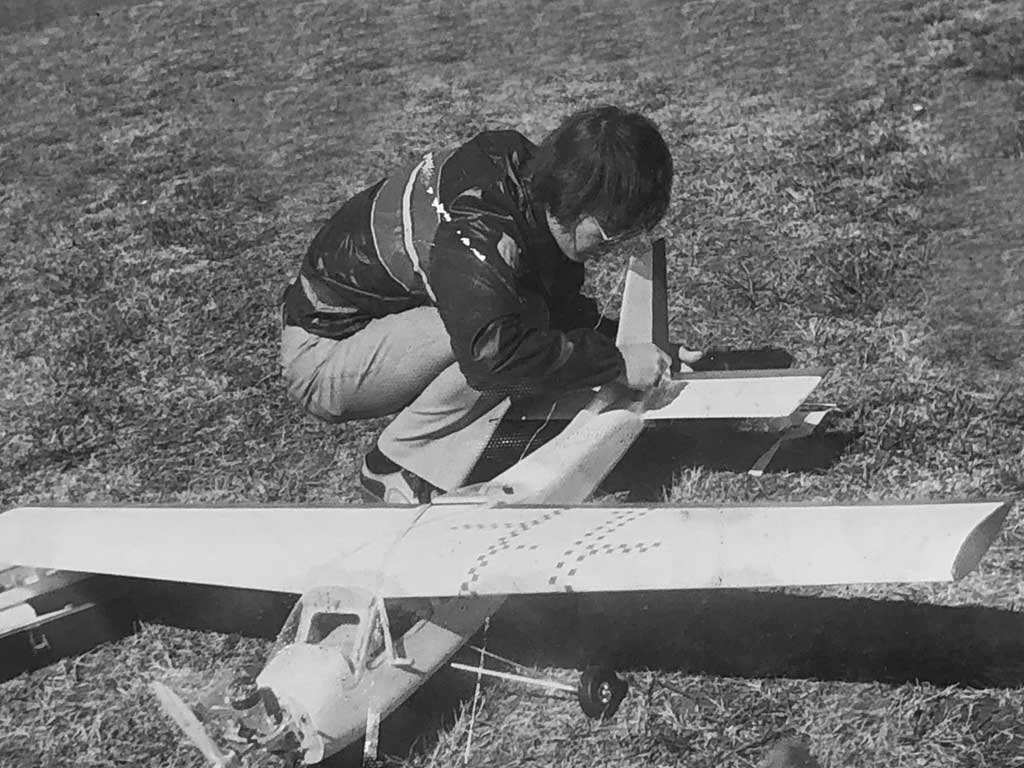
- '73, hair over my ears, 2-tone shoes, and my Fox-powered Cardinal Squire

Print
With no internet or Google, reading didn't mean a monitor and links to other information, it meant a newspaper, monthly magazines, and books. Print meant paper. The library had all three. The library was five alleys off the nearest trail, call it a half mile.
The old man - retired Army sergeant major - allowed me to roam Red Mountain on my YZ125 motocross bike. That ridge backed onto our house on the south side of Birmingham and was crisscrossed by trails. The Yamaha's engine dumped into an expansion pipe so it was loud. No gauges or lights either, so no tag.
However, alleys don't have names so they're technically not streets. When the old man agreed to look the other way if I didn't call attention to myself, it meant idling that 1/2 mile to the library (expansion pipe brings attention). I stayed off of cops' radar and never caused Dad to take official notice (and yes, I asked because I never crossed the old man and he'd told me no streets and guardhouse lawyer that I was, I knew alleys counted).
When I got my motorcycle license and a street legal motorcycle six or eight months later, this opened all of Birmingham to me. It added hobby shops. This meant magazine racks. Magazines included Flying Models, Model Builder, American Aircraft Modeler, Model Airplane News, and Radio Control Modeler. The latter known simply as RCM. RCM soon became my favorite.

Lore
In addition to print, learning everything also meant gaining lore. Lore meant information. Yes, some would amount to old wives tales but most has stood the test of time. In any case, in the beginning everybody knew more than me! Especially Bill.
Bill was the manager of the RC department at Homewood Toy and Hobby. I've been lucky my entire life. Lucky in having the means of getting to the library, and twice lucky the modeler who ran the RC department of said hobby shop lived nearby - spotted him two blocks over one day unloading a CL model (control line). Stopped and talked (I'm not shy).
Luckier still in that he was also willing to be pestered by a curious 14 your old. And, very important, lucky that he had a tolerant wife willing to have me constantly underfoot (14 y/o and little sense of boundaries). Bill and Amy's became my second home. That's a lot of stars aligning to define my luck, capice? Let's see how print and lore covered the bases.

The twofer . . . print + Lore = education
After work and weekends Bill flew pattern. Passionate about aerobatics. Loved control line aerobatics, also. Flew Saturday, Sunday - left the house at 7AM sharp - set your watch, Amy was Mondays so no flying. Tuesday, and Wednesday, then open late on Thursdays so no flying, and then Fridays. Two weekend days and three days in the week. Worked at it after work. Willing to teach and I was a sponge. Marine, served in Vietnam doing his part keep A-6 Intruders on mission (A&P, electronics). Dedicated. Perfectionist. Paint the picture?
For example, early on the agreement was 5:30PM at his place. My job was to help load the car (to be at Grayson Valley field by 6PM). That gave us (him) just enough time for three flights. Practice flights. Importantly, thus began the accumulation of knowledge as I began to learn the lore.
Like fuselages are carried nose down and tail high forward. And tails always lead through doorways. More stable with the heavier engine facing down and away (pendulum effect) and eyes on tail surfaces so I could steer it through doorways undamaged. Precluded dings. Dings meant work. Repairing meant not flying. Bad juju.
Lore ensured more than learning how to minimize opportunities for damage during a dangerous time for a model (being carried by hand out of a shop through several doorways and out to a car doors and trunk lid to be loaded and padded carefully). Yes, amazing, even simple things like this have to be taught because the alternative is experience.
Remember experience? Experience is that bitch that administers the test before the lesson? Lots of models have been carried nose first through doorways only to suffer the indignity of damage to a horizontal or vertical stab. Tend to get ripped off. Large pieces crushed. Lot of work to repair. Even dumb ones only do it once - experience. Some learn by listening. Lore. Requires a teacher as well as a student.
Bill was patient and I was eager. Only not too patient because like my old man, he expected to say things once only. He didn't run me off so I must have been an apt pupil because he suffered no fools outside of work (had risen to SSgt E-6). Note; as a rule, sergeants don't put up with stuff.

Lore continued . . .
Lore included learning to call maneuvers. 3-loops - entered midfield performed upwind, departure on heading and at entry altitude. Harder than you think to do three perfect loops. Required practice. Lots. Or maybe three rolls - entered at level flight, 45° upwind from judge's center (flown downwind) and ending exactly at 45° downwind from the judges (sitting behind the pilot). Pit bitch was my title (actually it was slave, and meant jokingly but I can't say that these days because it's not politically correct).
Anyway, I was the pit bitch because I wiped the plane down after every flight. Also refueled the model. And not a drop to hit the ground so slow down with the pump as it started to sputter out of the pressure line. You learn a lot by keeping your mouth shut and following directions. No pay as such (where slave entered in).
For example, how to change a prop (more to it than you might think). Like unlike with an electric model it has to be aligned for compression, has to be balanced, has to be tightened properly. Or how to hand start a Supertigre engine. Priming, engaging the glow heat, flipping smartly through compression. Or how to properly hand off a transmitter. Heck, even how to tun on the model first, then the transmitter (shut down is the reverse). And contests on weekends in the summer. Nirvana. That was the essence of lore. I was happy as a pig deep in you know what!

More musings regarding print . . .
My favorite magazine (the only one I bought) was RCM. Principally because of Clarence Lee and his column, the Engine Clinic. What I turned to first. Not dissing the other columnists. And certainly not the features of each issue as decided by Mr. Dewey, the publisher, but I lived for Engine Clinic.
This, because I was already a budding gear head. Soon knew the delivery schedule by heart and 3rd Wednesday I was at the hobby shop (subscriptions wouldn't come until after college). Walter (the owner) and because of Bill Norman, would ignore my readying all the magazines on the rack because he knew I always bought the RCM. So the magazine rack was mine to ransack (as long as I didn't get fingerprints on the covers by holding them too tightly, cheap print would rub thin and be visible - a no-no). Magazines were my treasure trove.
Anyway, Mr. Lee, as the title of his column - the Engine Clinic - informs you, is an engine man. The best. Better still, he freely taught what he knew through his monthly column. People would write him with their engine-problems. Let's be clear. To me Clarence Lee was better than Dear Abby in the paper, or Smokey Yunick in Popular Science.
This, because he focused on model engines. And he did so with a clear common sense style of writing that left an indelible impressions. Good stuff for an impressionable young man 'and' at just the right point in his life. Maybe became an engineer at the University of Alabama because of it, who's to know? More importantly, Mr. Lee crossed the line between print and lore because he taught. Interactive. Like lore! How, when it's a static page? Simple, Mr. Lee often published two letters in one.
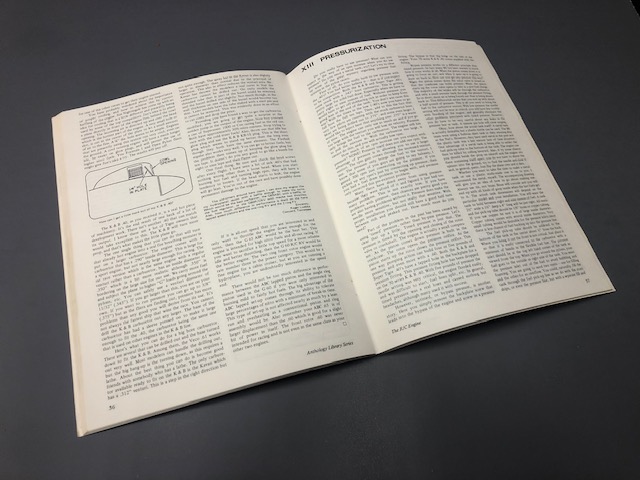
- Many arcane details - like the subtleties of cooling and pressurization

Someone would write, he'd respond. Engine Clinic was text-heavy. They'd sometimes write back thanking him and he would share the problem and resolution.' Fascinating" as Mr. Spock would say! At least to me and many others because Mr. Lee's column was most popular with loads of folks! Big fish, small pond of aeromodeling? Maybe, but always an accessible gentleman.
I especially loved when there was a follow-on letter from modeler having resolved their problem by executed his solution, and thanking him. These, especially gave insight. Taught me 'how' to think about a problem, too. Lots of practical knowledge and opportunities to explain as problems gave rise to solutions to same. Like I said, like Dear Abby on steroids - better. Smokey Yunick without the wile.
Anyway, question and answer is the oldest form of formal knowledge transfer - almost the Socratic method without the argument and the questions and answer stimulate the little gray cells. And Clarence Lee is a master. He would succinctly present the solution and the problem. Like an early form of Jeopardy!
The anthology Engine Clinic publication was a treasure. For his part, Mr. Dewey (the publisher) was sufficiently astute as to anthologize Mr. Lee's columns. Initially into a booklet-form called appropriately enough, the Engine Clinic. I soon had my own copy. Lost it and was fortunate to replace it years ago (reprint, I presume - don't know if they remain available, hope so). Subsequent volumes were thick enough to warrant binding. Books, not booklets.
Worth owning today - 50 years on. Why? Simple, it's because engine handling knowledge never gets obsolete. Why not? It's because topics regarding compression, fuel, air, and ignition are the realm of physics - immutable laws! Filtration, cleanliness, cooling, the proportion of oil to nitro to alcohol. These are all subject to science and experimentation, ditto compression rations and carburation but physics don't change, you grok?
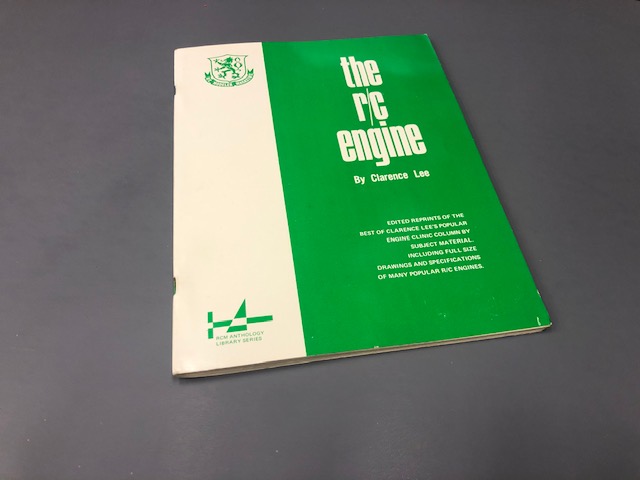
- My treasured copy of Engine Clinic, an anthology of Clarence Lee articles

The regular feature (a monthly in a monthly magazine) called the Engine Clinic solved readers engine problems. Clarence Lee would publish readers problems. Along with engine reviews, his column involved solving problem - often complete with professional illustrations (and sometimes photos) to bring the descriptions of engine problems and their resolution, to life.
I read him avidly. Devoured the material . . . read, re-read, read it all over again! And learned. Did I mention I love engines? If not started here, was reinforced right then - along with motorcycle and automotive engines. Interests I hold to this day.
This closeup of a British Merco .61 shows how a dual-plug head was illustrated with the superb professional presentation of line art.
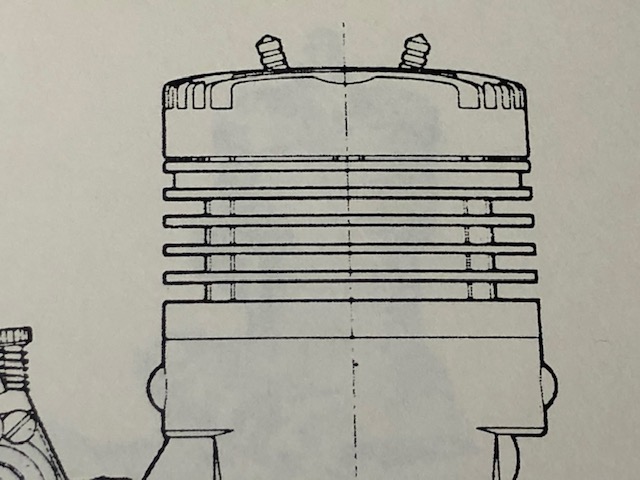
- typical professional illustration, Merco .61 equipped with two glow plugs

Anyway, by engine man, I mean Mr. Lee designed model engines. Not just one-offs in a machine shop but actual series production methanol fueled internal combustion engines. A company called K&B produced one of his, a .61 cubic inch (10cc) single-cylinder 2-stroke cycle engine. A lot of them have been produced and sold in runs of 500 engines at a time.
Lot of engines to make parts for, bring together into engines, package, and distribute. Big company for the modeling world. And important to this story, he offered a customized hand fitted version. It's a special version called a Lee Custom. I own one. Cherish it. Great running engine. 2nd engine I ever bought, and the very first one I got brand new in a box.
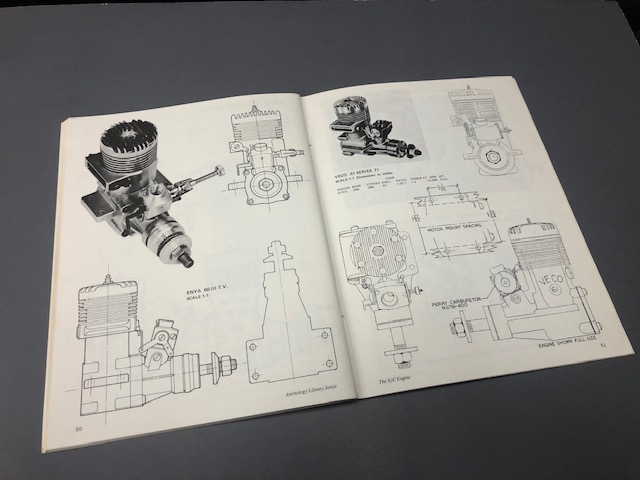
- Enya 61 on the left, K&B .61 on the right - I own both to this day

So Mr. Lee is getting up in age. Born in 1923, he's still doing his thing although his better half recently confided he'd pulled back from working in his shop. Want to know more about engines? Buy, beg, borrow, or steal copies of the Engine Clinic . . . there's the original the r/c engine by Clarence Lee and Volumes II, III, and IV plus the r/c 4-stroke engine.
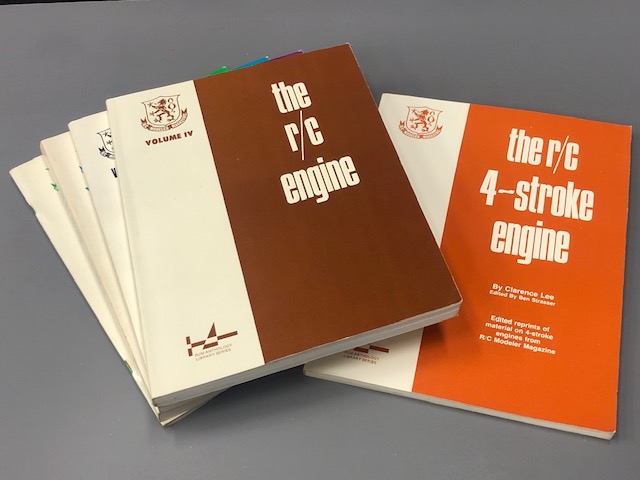
- a master's level compendium for those interested in r/c model engines

Have you got a DVD player? Want to learn a little bit more about r/c model engines? Click this link for more on: aboutENGINES